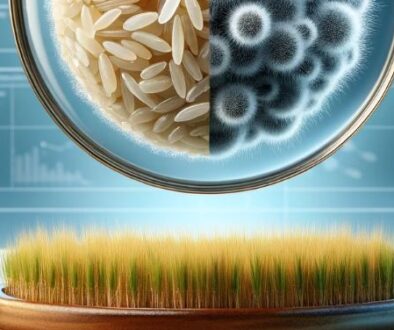In vivo blood pressure lowering experiment of rice active peptides
Explore the antihypertensive potential of rice peptides in SHRs, offering insights into their mechanisms via ACE inhibition and NO pathway modulation.
Key words: rice peptide, ACE inhibitory activity, antihypertensive effect, Caco-2 cell
Introduction
Research has identified many ACE inhibitory peptides. However, due to the effects of metabolism, absorption, and other factors on ACE inhibitory peptides in vivo, there can be significant differences between their in vitro ACE inhibitory activity and their antihypertensive activity in spontaneously hypertensive rats (SHRs). This necessitates further investigation into the antihypertensive effects of rice peptides in vivo, providing a theoretical basis for their use in medicine and functional foods. This study, extending the findings of Chapter 2, explores the inhibition of ACE activity by rice peptides in vitro and their effects on blood pressure in SHRs and normotensive control rats (WKYs) through both single-dose and long-term administration.
Materials and Methods
Materials and Reagents
Rice peptides were prepared as described in Chapter 2. Captopril was purchased from Sigma, USA. Male SHRs (age 10 weeks, weight 240±20g, systolic blood pressure (SBP) >180mmHg) and male WKYs (age 10 weeks, weight 242±10g, SBP <150mmHg) were acquired from Beijing Vital River Laboratory Animal Technology Co., Ltd. Kits for measuring angiotensin II, renin, nitric oxide (NO), ACE levels, and activity were obtained from Nanjing Jiancheng Bioengineering Institute.
Equipment
A 7200 visible spectrophotometer, BP-100A non-invasive blood pressure meter, and an iMark microplate reader were among the main instruments used.
Experimental Procedure
The animals were housed under specific pathogen-free (SPF) conditions with controlled temperature and light cycles. Following a week of acclimatization, SHRs were divided into five groups, and WKYs into three groups, with treatments including various doses of rice peptides and captopril as a positive control. Blood pressure was measured using the tail-cuff method, and the effects of single-dose and long-term administration were assessed.
Results and Analysis
Single-Dose Administration Effects
Rice peptide administration led to a decrease in SBP in SHRs, with the magnitude of reduction increasing with the dose. The maximum decrease was observed with 100mg/ml concentration. Captopril showed the greatest reduction in SBP. In WKY rats, captopril significantly reduced SBP, whereas rice peptides had no hypotensive effect.
Long-Term Administration Effects
Long-term administration of rice peptides and captopril significantly reduced SBP in SHRs compared to control. The positive control group showed the highest reduction, followed by high-dose rice peptide treatment. In WKY rats, only captopril led to a significant decrease in SBP.
Effects on Renin, ACE, Ang II, NO Levels, and ACE Activity
The study found no significant differences in renin levels between groups. Captopril and high-dose rice peptides significantly reduced ACE levels and increased NO levels in SHRs, indicating a potential mechanism involving the renin-angiotensin system (RAS) and NO regulation.
Effects on Left Ventricular Mass Index
Both captopril and high-dose rice peptide treatment significantly reduced the left ventricular mass index in SHRs, suggesting their potential in preventing left ventricular hypertrophy, a common consequence of hypertension.
Conclusion
Rice peptides exhibit dose-dependent hypotensive effects in SHRs, both in single-dose and long-term administration. These effects are likely mediated through the modulation of the RAS and NO pathways. However, rice peptides do not affect blood pressure in normotensive WKY rats, indicating their specific utility in the context of hypertension. The findings provide valuable insights into the antihypertensive potential of rice peptides and their mechanisms of action.
For more further detailed information of this research, feel free to contact our team for asssistance.
The original research is done by WANG Shen,GONG Zhiyong(School of Food Science And Engineering, Wuhan Polytechnic University, Wuhan,430023, China) The ariticle ID is: doi: CNKI:CDMD:2.1015.537891












